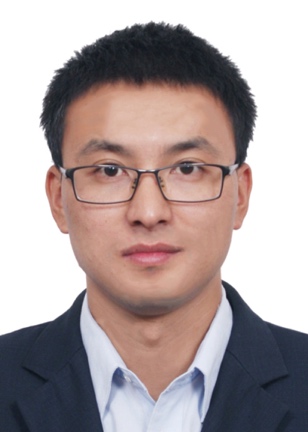
Senlian Hong, PhD
Assistant Professor
Research Center of Chemical Biology
Peking University
Phone: +86-010-82805631; E-mail: hongsen414@pku.edu.cn
Address: 38 Xueyuan Rd, Haidian District, Beijing 100191, China
Education/Working Experience
2021.03-present School of Pharmaceutical Sciences, Peking University Assistant Professor
2016.12-2021.02 Department of Molecular Medicine, The Scripps Research Institute Postdoc
2014.07-2016.12 College of Chemistry and Molecular Engineering, Peking University Postdoc
2009.09-2014.07 School of Life Sciences, Peking University PhD (Biophysics)
Research Focus
Glycan, the third-alphabet of life after DNA and protein that has long been underappreciated by the scientific community, play essential roles in a broad range of biological processes, particularly in immune responses, pathogen infections and cancer etiology. Although bioorthogonal reporter strategies have revolutionized our ability to selectively manipulate glycans in living systems, glycoscience is drastically trapped down by the non-template-driven biosynthesis, chemical complexity and heterogeneity of glycans. The research in the Hong laboratory stays focused on exploiting biocompatible exogenous chemistry to decipher live-cell glycan activities (e.g., localization, interactions, and signaling transductions). Using these newly developed bioorthogonal glyco-chemistry tools, we approach the complex glycostructures and investigate the glycobiology, especially underlying immune defenses.
1.Investigate biological roles of glycans on immune cells and explore glyco-therapeutics
Beyond glycan labeling and imaging, glycochemistry-based exogenous manipulation of live-cell glycans represent attractive yet challenging for glycoscience. Our research will specifically focus on developing chemistry to in situ edit live-cell glycans (i.e., glycans on immune cells) for monitoring their activities, as well as developing glyco-agents for therapy purposes.
2.Dissect dynamic glycosylation and metabolism involved in cell fate determination
The precursors for glycosylation directly linked such posttranslational modifications with intracellular metabolism, and both dynamic glycosylation (i.e., O-GlcNAcylation) and metabolic reprogramming are important (patho)physiological indicators for live cells (e.g., immune cells status). Resolving glycosylation signatures could pave a way to understand how extracellular stimuli (e.g., nutrient fluctuations) educate live-cell fate, particularly with immune cell status determination. Our lab will devote to explore and apply novel single-cell-based platform technologies to investigate the correlation between glycosylation, metabolites and cell-status, besides developing visual modality for metabolism imaging and related high throughput screening.
Selected References
1.Hong S#,*, Yu C#, Wang P#, Shi Y, Cheng B, Chen M, Chapla D G, Reigh N, Narimatsu Y, Chen X, Clausen H, Moremen K W, Macauley M S, Paulson J C*, Wu P*, Glycoengineering of NK Cells with Glycan Ligands of CD22 and Selectins for B-cell Lymphoma Therapy, Angew. Chem. Int. Ed. Engl., 2020, 60(7): 3603-3610.
2.Hong S#, Feng L#, Yang Y, Jiang H, Hou X, Guo P, Marlow F L, Stanley P, Wu P, In situFucosylation for Modulating Live-cell Wnt Signaling, 2020, Cell Chem. Biol., 27(9): 1140-1150.
3.Hong S#, Chen T#, Liu L, Cao C, Rabinowitz J D, Huang Y, Chen X, Live-cell Imaging of NADPH Production from Specific pathways. 2020, CCS Chem., 2: 1642-1648.
4.Hong S, Geramie G, Yu C, Chapla D G, Reigh N, Moremen K W, Xie J, Wu P, hFUT1-based Live Cell Assay to Profile α1-2-fucosides-enhanced Influenza A Virus Infection, 2020, ACS Chem. Biol., 5(4): 819-823.
5.Hong S#, Sahai-Hernandez P#, Chapla D G, Moremen K W, Traver D, Wu P, Direct Visualization of Live Zebrafish Glycan via Single-step Metabolic Labeling with Fluorophore-tagged Nucleotide Sugars. Angew. Chem. Int. Ed. Engl., 2019, 58(40): 14327-14333.
Highlight in Nature:Work/Technology & Tools, 2020
6.Hong S, Shi Y, Wu, N C, Grand G, Douthit L, Wang H, Wen Z, Sharpless K B, Wilson I A, Xie J, Wu P, Bacterial Glycosyltransferase-mediated Cell-surface Chemoenzymatic Glycan Modification, Nat. Commun., 2019, 10(1): 1799.
Editors’ Highlightsin Organic Chemistry and Chemical Biology, 2019
7.Hong S, Lin L, Xiao M, Chen X, Live-cell Bioorthogonal Raman Imaging. Curr. Opin. Chem. Biol., 2015, 24: 91-96.
8.Hong S#, Chen T#, Zhu Y, Li A, Huang Y, Chen X, Live-cell Stimulated Raman Scattering Imaging of Alkyne-tagged Biomolecules. Angew. Chem. Int. Ed. Engl., 2014, 53(23): 5827-5831.
9.Feng L#, Hong S#, Rong J#, You Q, Dai P, Huang R, Tan Y, Hong W, Xie C, Zhao J, Chen X, Bifunctional Unnatural Sialic Acids for Dual Metabolic Labeling of Cell-surface Sialylated Glycans. J. Am. Chem. Soc., 2013, 135(25): 9244-9247.
10.Lin L#, Tian X#, Hong S#, Dai P, You Q, Wang R, Feng L, Xie C, Tian ZQ, Chen X, A Bioorthogonal Raman Reporter Strategy for SERS Detection of Glycans on Live Cells. Angew. Chem. Int. Ed. Engl., 2013, 52(28): 7266-7271.
11.Xie R#, Hong S#, Feng L, Rong J, Chen X, Cell-selective Metabolic Glycan Labeling Based on Ligand-targeted Liposomes. J. Am. Chem. Soc., 2012, 134(24): 9914-9917.
Welcome talents to join us as postdoctoral researchers or graduate students. Please send your CV to hongsen414@pku.edu.cn